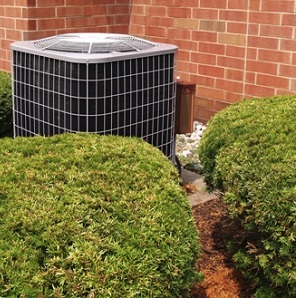The size of an HVAC system is one of the most important factors influencing its efficiency. If your Amana AC heater wall unit is too small for your home, it will work harder to heat and cool it properly, but it will fail. Before purchasing an HVAC system, it is critical to determine the appropriate sized air conditioner or heating system for your home.
A common mistake homeowners make is purchasing the incorrect air conditioner size, which is sometimes too large for their home. As a result, the homeowner spends more money than necessary on energy and operating costs. What type of heating or cooling you prefer will determine the most efficient way to determine HVAC system capacity. Whenever it comes to HVAC equipment, bigger isn’t always better.
We cannot overstate the significance of selecting an appropriately sized HVAC system. It will run efficiently, save you money, and help you keep a comfortable temperature all year. Here’s a simple step-by-step guide to determining the approximate size of your HVAC system.
1. Calculate Your Home's Square Footage
If you don’t know the total square footage of your home, you’ll have to search for ‘AC contractor near me’ and measure each room. Make a rough drawing of your house, and label every room that needs to be measured, including the hallways. Every room’s length and width should be measured. Multiply the length by the room’s width to get the total square footage. For example, if a room measures 12 feet by 20 feet, its total square footage is 12*20 = 240 square feet. To calculate the total square footage of your home, add the square footage of each room.
2. Size Does Matter
There are two kinds of HVAC systems: single-stage and two-stage. Single-stage units are ideal for your home if your desired temperature does not exceed the normal setting during the summer or winter. Two-stage units are recommended if temperatures become hotter or colder than your Amana AC unit‘s size allows. If you live in an area where temperature extremes occur, you must factor this into your residential load calculation.
3. Calculate the Base BTU
The British Thermal Unit (or BTU) is a heating unit. To calculate the base BTU for HVAC sizing, multiply the total square footage of your home by 25. If the total square footage of your home is 1,000 square feet, the BTUs required are 1000*25= 25,000 BTUs.
4. High Ceilings
If your ceiling is higher than eight feet, multiply the base BTU by 1.25. You can determine the size of cooling and heating units you need after calculating the base BTUs for your home size. Divide your base BTU by 12,000 to calculate AC tonnage. So, if your base BTU is 25,000, you’ll need (25,000/12), which is roughly two tons. A furnace with an efficiency of 80% would require a BTU output of around 25,000*0.8 = 20,000 BTU.
These are fundamental calculations, and there are various factors to consider when sizing your HVAC, including the number of people in the building, the number and placement of windows, and the amount and type of insulation.
Professionals will use Manual calculations for more precise measurements, which take all of these factors into account. This enables the technician to determine the exact size of HVAC to install in your home for maximum comfort and efficiency. A properly trained HVAC professional that I Heart Amana connects you with will be able to take the necessary measurements and design a system that meets the climate control requirements of your home.


